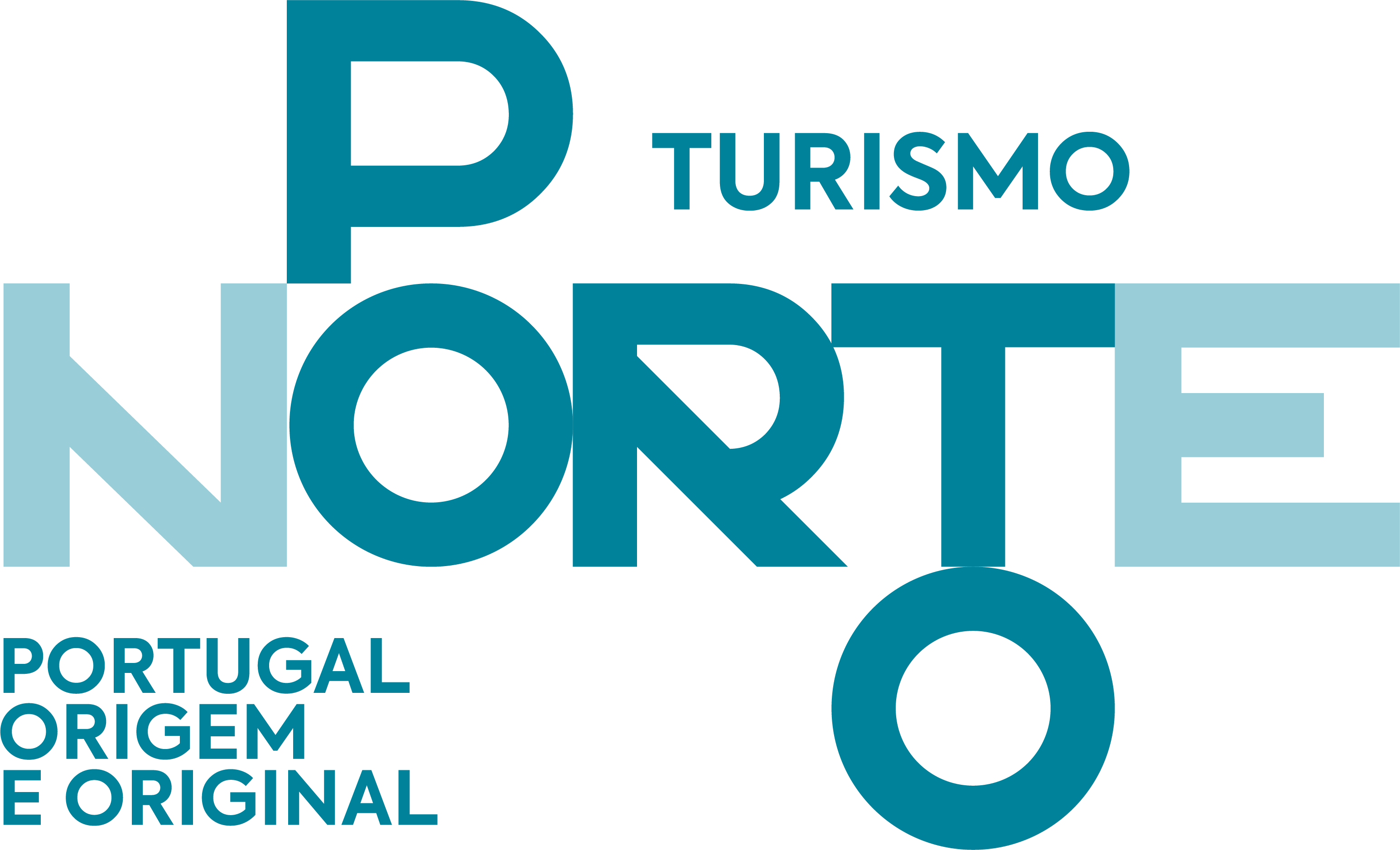Family Crafts and Arts in Porto and the North of Portugal
#NewsOn March 19th, two commemorative dates are celebrated: Father's Day and World Artisan Day. To celebrate both, we highlight several art forms typical from Porto and the North of Portugal, which are passed down from generation to generation, from father to son/daughter.
In honour of all the fathers and all the traditional art forms that mark the authenticity of our region, we invite you to follow an itinerary in which you will discover various traditional and unique arts and crafts, that mark generations, identity traits and memory collective action in our region.
Douro
Bisalhães Black Pottery – Vila Real
Bisalhães Black Pottery is a craft which is a UNESCO Intangible Cultural Heritage since 2016.
This craft is a very old process, with very peculiar characteristics and typical of the village of Bisalhães, having passed down from generation to generation. The village potters taught their children the techniques and processes that a piece of black clay requires and which date back to the 16th century. It all starts with the initial treatment of the clay until it is baked. The pieces are born by the hands of artisans, are cooked in old ovens open on the ground, where gorse, dry pine needles, broom plants are burned and then covered with dark earth which gives it the typical black colour.
Today, this craft continues to be practiced by ancient potters who try to pass on their legacy to the younger generation and not let this UNESCO Heritage get lost in time.
Basketry – Moimenta da Beira

In Moimenta da Beira, there is a craft that has been passed down from generation to generation for several decades: straw and bramble basketry.
Joaquim Silva learned to make straw and bramble baskets with his father, to use in agriculture from sowing to fertilising. He and his brothers did not follow in their father's footsteps, having put aside the art of basketry for other professional endeavours. But, about 10 years ago, Joaquim felt the urge to go back to creating pieces with the craft that his father taught him so many years ago.
And he says that he continues to do so that this art is not lost in time and remains alive in his homeland.
Miller – Moimenta da Beira

Near the village of Ariz, in Moimenta da Beira, there is an isolated place that has not yet been discovered by electricity. Augusto Ferreira lives here, with his wife in a house above the mill, in which he works daily.
In the late 1950’s, Augusto's parents bought the mills and the surrounding lands, and Augusto learned the art of the mill from his parents.
He knew all the mills in the area, from Fráguas to Ariz. Today, most of it is in ruins and, while some are still complete, they no longer work. Suitable for milling, there are only two - his and one in Peva, which he helped to get back up and running. He knows the mills piece by piece and you just have to look at the spinning millstone to see if the water that flows is enough, if the blades/paddles in the waterwheel are all in order or if there is any wedge that needs to be tightened.
From the mill, he obtains the flour to cook, in the fireplace, various delicacies such as corn bread.
Porto
Miniature Boats – Porto
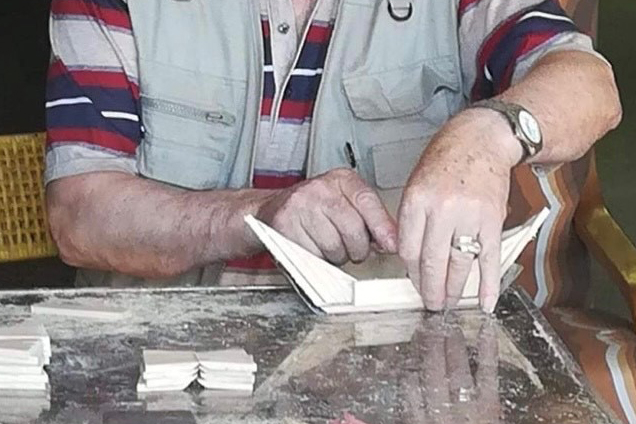
There is, at Muro dos Bacalhoeiros, in Ribeira, a miniature boat building workshop. It is called Barcos Naná, because the artisan who gives them life, Fernando Teixeira, is commonly known by his friends as Naná. The craft has been in the family for three generations. It started with his grandfather, who passed the legacy on to his father, who in turn taught the skill to Naná, who dedicates himself with commitment and passion to the construction of miniature rabelo boats. It is one of the most visited places in Ribeira, both for its location, with a panoramic view over the Douro River, and over the Rabelos boats, or for the genuine character of the space and the craftsman. It is a must-visit in the Invicta city.
Filigree – Gondomar

Gondomar is considered the “Jewellery Capital” in Portugal, being one of the most important productive hubs of jewellery since the 18th century. Its best-known technique is filigree.
Filigree is an ancestral jewellery technique that consists of twisting two gold or silver threads, usually very fine, which are then applied to frames with various shapes, filling them with a delicate tracery. Its craft and production is rooted in the city, having been part of family businesses for decades. Several men from Gondomar created their own workshop, perfecting their art and transmitting their legacy to their children, later to their grandchildren, to this day. Eduardo Ferreira is one of several examples of artisans who learned the art of filigree from his father and today he already has his son Tiago managing the business.
Eduardo's workshop, together with 6 more workshops such as Só-Ouro, Fânzeres' Sacred Art workshop and Alfredo's workshop, are part of the Filigree Route. You can discover more about this art by exploring the Route, getting to know the handmade production of the filigree through visits to the workshops (which are free), visit to Casa Branca de Gramido and even a workshop at Centro de Formação Profissional da Indústria de Ourivesaria e Relojoaria-CINDOR (a professional training centre for making jewellery and watches).
Capela’s Violins – Espinho
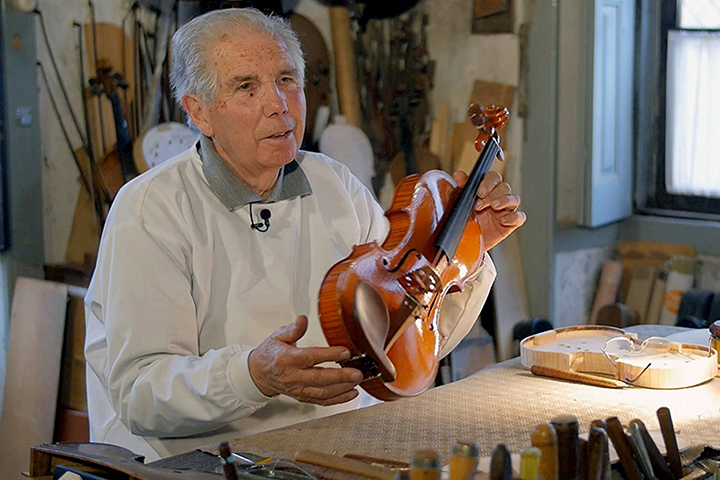
In Espinho, one of his most important and most valuable arts is the Capela’s Violins.
The house, in the parish of Anta, has seen three generations of the Capela family, where instruments come to life, especially violins, with worldwide fame. Capela’s luthiers build and repair violins, cellos and violas, all handmade.
In 1924, the young woodworker Domingos Capela repaired a violin of an Italian musician who performed in one of Espinho's casinos. Other repairs followed, until he met cellist Guilhermina Suggia, who invited him to work at Conservatório de Música do Porto (Porto’s Music Conservatory). From then on, he never stopped making string instruments, always in his workshop near Largo da Igreja da Anta, where his heirs still work today. He died in 1976, but one of his sons, António Capela, had already guaranteed the continuity of this art, through training abroad, namely in Paris and Cremosa, the birthplace of the great luthiers. He participated in several violin making competitions, won several awards, and his greatest success was achieved in 1972, in Poznan, Poland, when he competed, together with his father, with four violins that reached the first four places. Following in his father's footsteps, he was also recognised internationally.
Today, it is his son, Joaquim Capela, who has done the same thing. He built his first violin at the age of 13 and, shortly after, participated in his first international competition. He studied in the US, and he has also won several awards in international competitions, maintaining a family tradition that is already in its third generation.
Minho
The Art of stoneworking – Esposende

It was at Lugar da Lagoa next to the EN13 (A-road 13), in Esposende, where it all started. It is precisely in the vicinity of this place that Manuel Fernando Morgado Neto currently owns his work studio. Father, Son and Craftsman since long ago, he is an artist in the art of working mainly with stone. This art typical of Esposende, consists of the transformation of granite into works of art such as sculptures.
He learned this art from his family roots, where he mentions the influence of his uncles Franklim Vilas Boas and António Vilas Boas, highlighting the figure of his father and great mentor Quintino Vilas Boas Neto, whose legacy he keeps alive, with the resilience and discipline instilled by his father. Quintino Vilas Boas Neto’s works are in several places, and you can get to know some at the Municipal Museum of Esposende.
The Art of working with clay – Barcelos
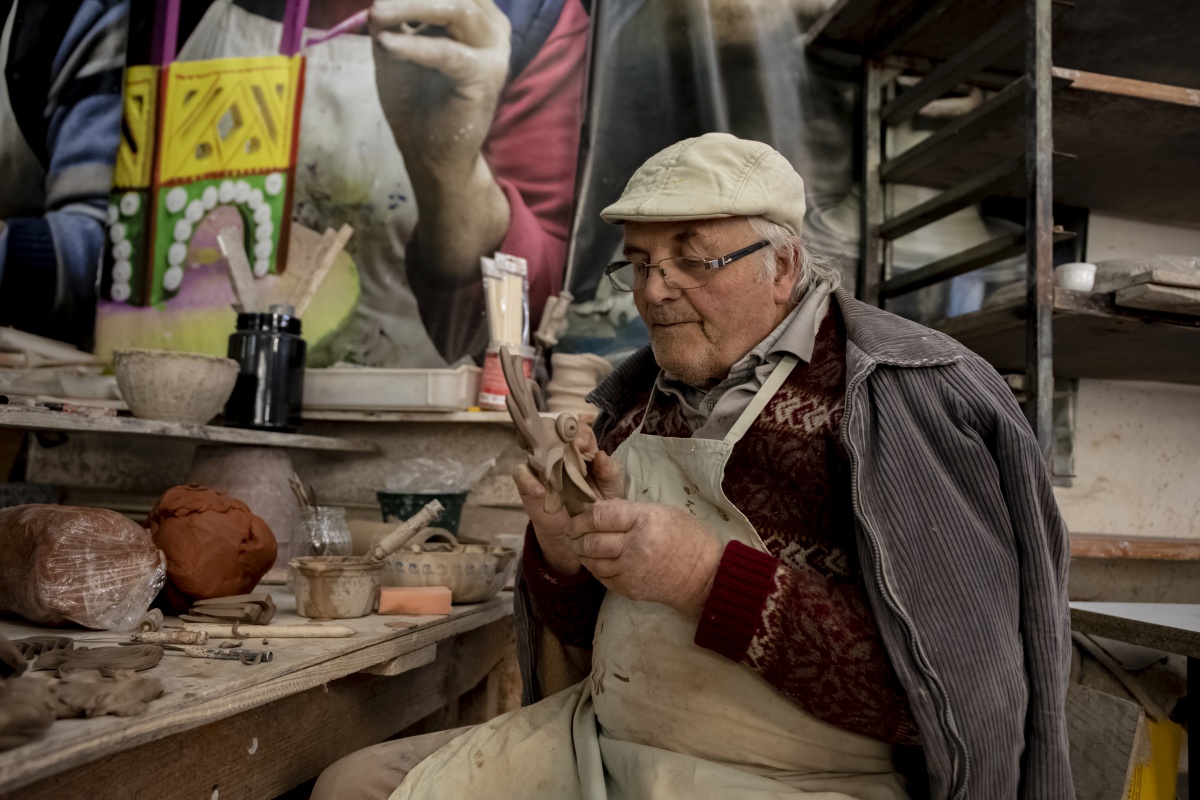
The Figurado de Barcelos is, today, a certified artisanal production. Its history and production mark the city of Barcelos, as well as its families, being represented in several family workshops in the city. One of them is Fernando “Baraça”, son of the distinguished artisan Ana Baraça. From an early age he learned the craft of working with clay, from his mother and from his grandfather who was a potter. The passion for clay and the craft were enough motivations to dedicate a lifetime to the production of Figurado de Barcelos.
This of course was passed on naturally to his sons Vítor and Moisés, who also, since they were children, chose handicrafts as a profession, not imagining life any other way. Artistic creativity is what goes on in their heart and soul.
Basketry – Barcelos
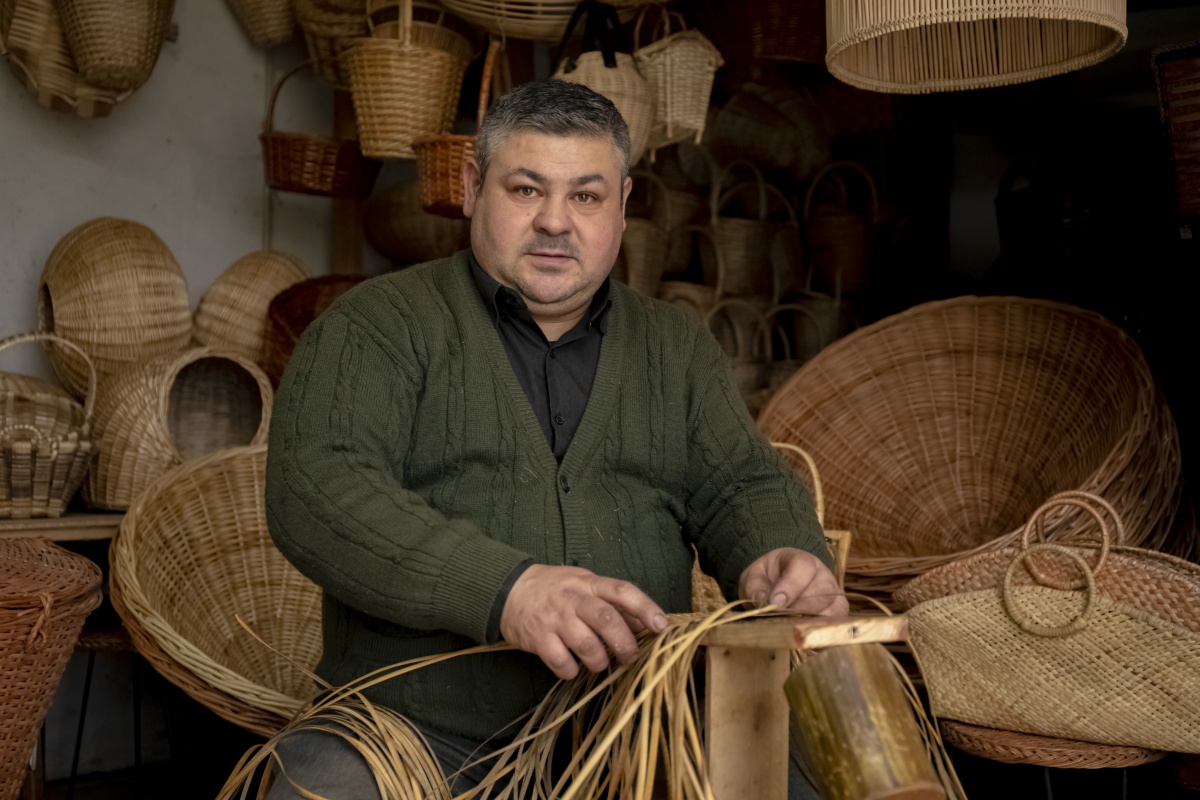
Barcelos is undoubtedly a place dedicated to handicrafts. One of the various arts practiced is basketry, either with a utilitarian nature, being the baskets used for traditional agricultural activities, or with a creative sense of decoration, as examples are small fans and fans for fireplaces.
Abílo da Costa Pereira learned to make “gigos” (baskets) to work on the land when he was 14 years old. But it was at the age of 28 that he dedicated himself professionally to basketry. The art of intertwining vegetable fibres no longer had secrets to Abílio Pereira, who with a natural talent and a lot of dedication, became his greatest passion. His technical skills and innate creativity promoted the innovative character of his pieces, always adapting to market trends. His professional career is also accompanied by the skills of Abílio dos Anjos Pereira, the only one of six children who proudly decided to follow his father's path.
We invite you to discover and explore the Rota do Vime e da Cestaria (Route of Wicker and Basketry), in Barcelos, to get to know even more not only this art, but also the fathers and children who work in it.
Making Black Earthenware - Barcelos
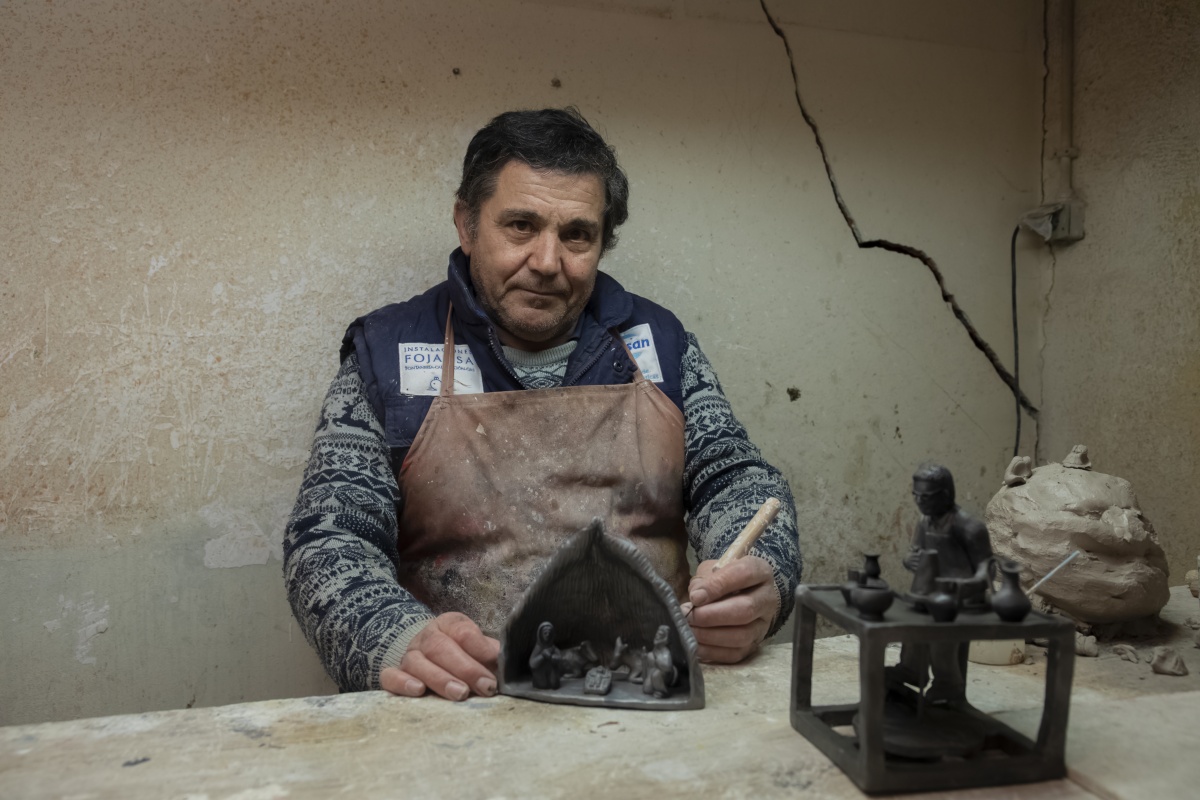
Another typical family art from Barcelos is making black earthenware.
Júlio Alonso, now 92 years old, grew up in a family of potters dedicated to making black earthenware. At the age of 8, he was already making mugs, so he made the “wheel” the “art” of his life. He was one of the best-known masters in this art in Minho, having been awarded in several fairs and exhibitions. He became known for adapting to the ancient techniques of making black earthenware the tradition of Figurado de Barcelos. His son João Alonso follows in his father's footsteps, dedicating himself also to the production of figurative black pottery, thus continuing Júlio Alonso's work and art.
Filigree – Póvoa de Lanhoso
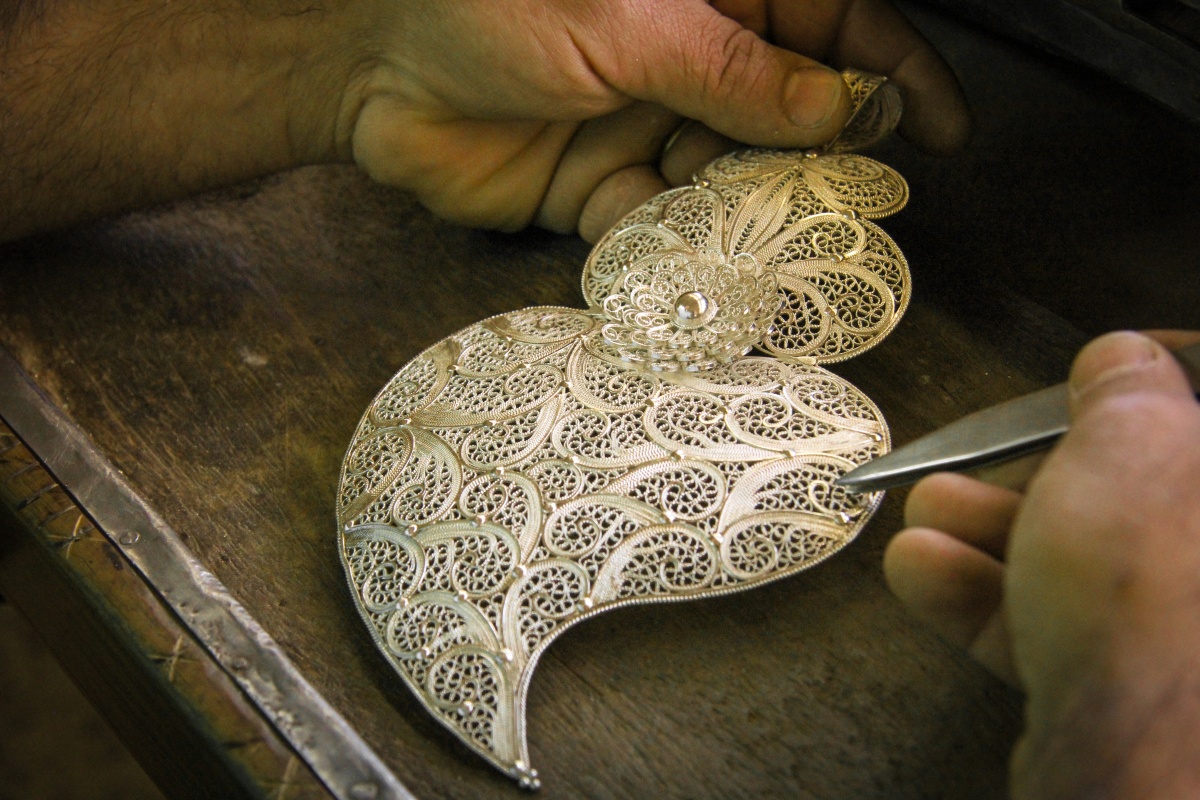
Filigree is the intangible cultural heritage that best symbolises the identity of Póvoa de Lanhoso.
This ancient art has come a long way to perfecting the technique, reaching beautiful works of art. This mastery is rooted in the transmission of empirical knowledge from parents to their children, perpetuating an umbilical connection between them, replicated in the intertwining of gold or silver threads.
Percussion Musical Instruments - Guimarães

The making of percussion musical instruments, such as the “snare drum” and the bass drum, is also an activity with a lot of tradition in Guimarães, especially dedicated to the Festivities in honour of S. Nicolau (Nicolinas). There are also artisans who dedicate themselves to making this type of musical instruments, whose legacy has been handed down to them generationally, such as José Manuel Alves and José Salgado Alves.
Trás-os-Montes
The Art of Carving Masks – Vinhais e Pinela, em Bragança
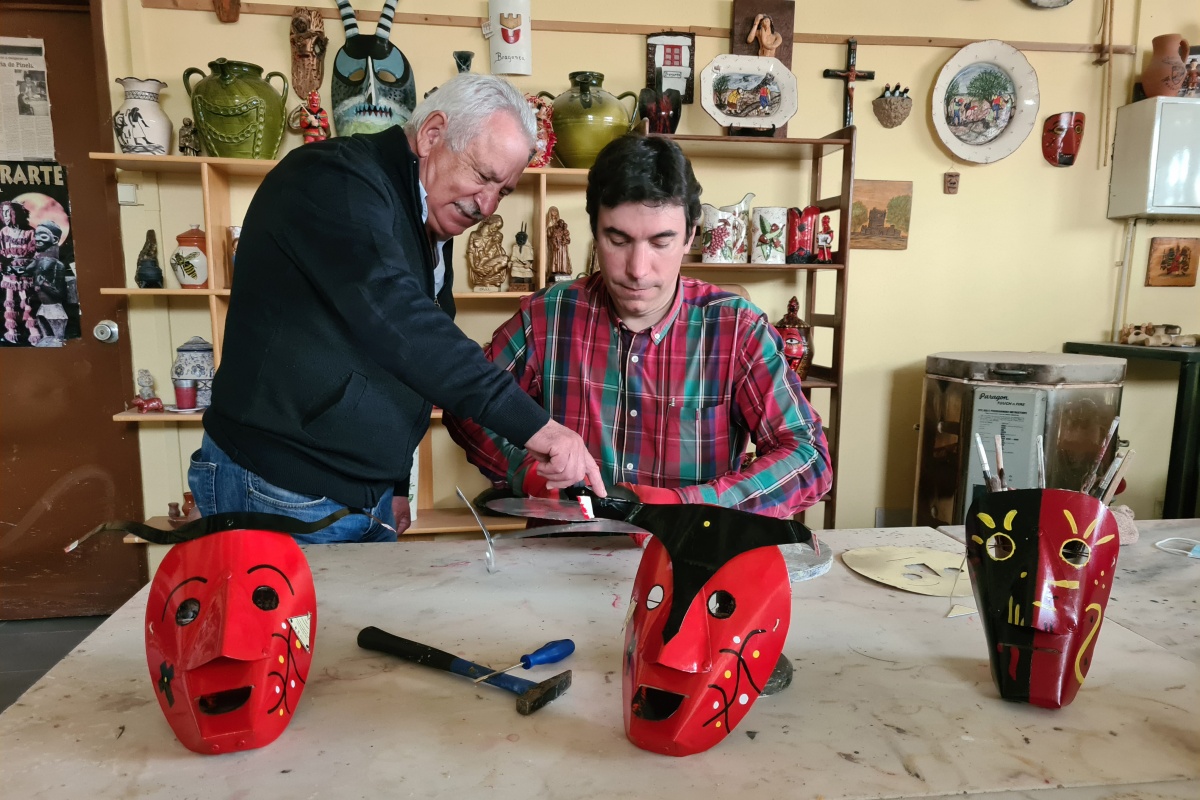
In Trás-os-Montes, the many rituals of masks, rooted in the Neolithic, deepened with the ancestral pre-Roman agro-pastoral societies and reached us through medieval peasant societies, following a path that has already spanned more than three millennia, marking the culture of Trás-os-Montes in a very strong and differentiated way.
Whether the secret of the liturgy of rituals or the perpetuation of the art of carving masks, passes from parents to children, such a transmission chain that cannot be broken. In the municipality of Vinhais, in the village of Vila Boa, Tozé Vale is an example who inherited the art from his father and passed it on to his son Edson Vale, since 2000. In the village of Pinela, in Bragança, you can find Manuel Alves Rodrigues carving the typical masks, arts he inherited from his father and handed down to his son Alex Alves Rodrigues.
The Art of forging steel and creating jackknifes – Palaçoulo, Miranda do Douro
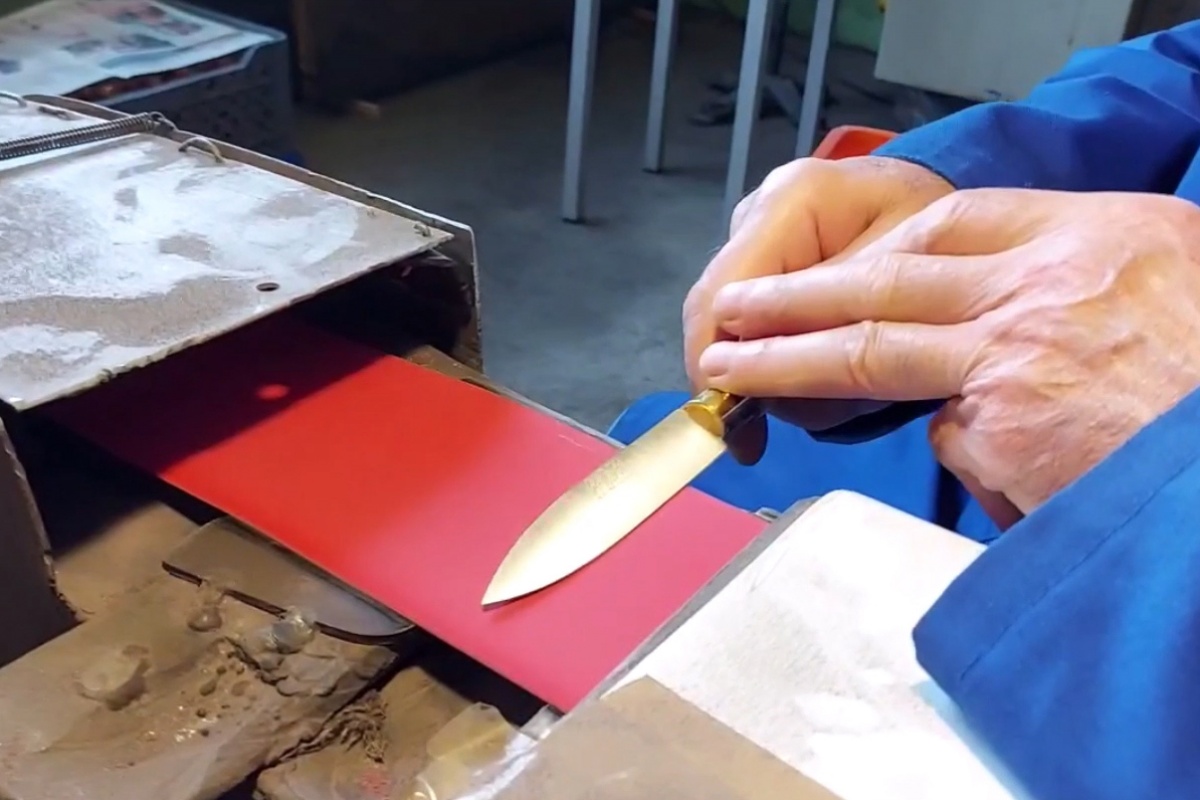
The talent of forging steel, the art of the perfect cut of the MAM jackknifes from the village of Palaçoulo, municipality of Miranda do Douro, has been passed down through several generations from parents to children.
José Afonso Martins, 75 years old, handed down the art to his son, Altino Martins. Now 64, Altino has already passed on his artistic knowledge to his sons Hugo Martins and Hélio Martins.
Another well-known example in the region where this art is produced is the business, which despite its growth, continues to be family-owned: Filmam. This business has been producing pocketknives for 150 years, with a volume of around 7 million. The main production model is named Palaçoula in honour of the village where this art was born and takes place.
